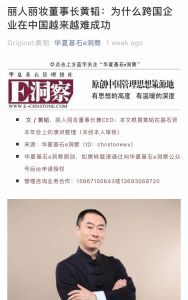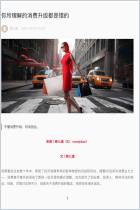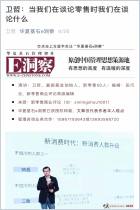China’s growing economic power and consumer market have created an inviting environment for foreign and domestic retail companies. But to succeed in this competitive field, you need insight into China’s unique history of cultural influences on consumer preferences. Huang Tao, CEO of an online cosmetics platform, shares his observations in his talk at Cornerstone Capital’s annual gala. When addressing foreign brands, Huang goes beyond the general advice of “do localization better” to offering a new perspective on how fragmented and disconnected cultural identities create hurdles for brands trying to reach wider demographics.
China’s consumer market is attractive to an increasing number of international retail brands.
For many multinational retail brands, China is becoming – or has become – their largest consumer market. In the past, China was part of an overall Asia-Pacific strategy for most brands, which defined product lines and operational standards. Few companies localized products and services to cater specifically to Chinese consumers. But sales in China are beginning to outsize those in other markets, so more and more brands are starting to localize products and marketing and to grant increased autonomy to Chinese managers. These changes are crucial. Amazon’s insistence on following global protocol for China led to its exit from China’s online marketplace while fast-food chain KFC – which offered fried dough and soy milk (staple breakfast items for the Chinese) – is thriving.
Global brands have trouble establishing themselves in China.
Multinational companies in the consumer goods industry aren’t doing well in China. Success came easy to early entrants such as Procter & Gamble, Unilever and L’Orèal when...





















Comment on this summary